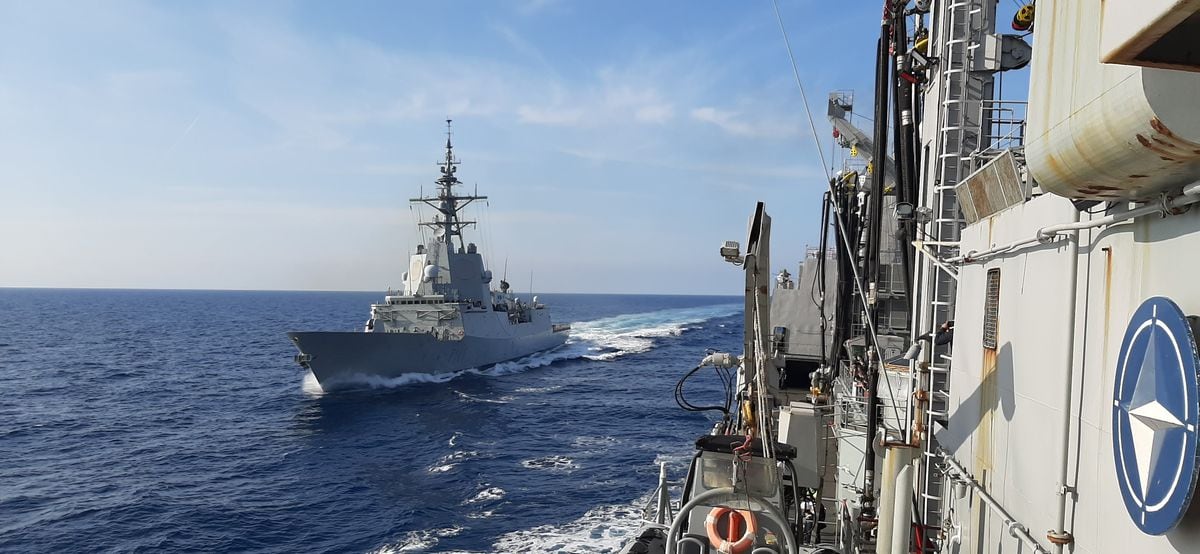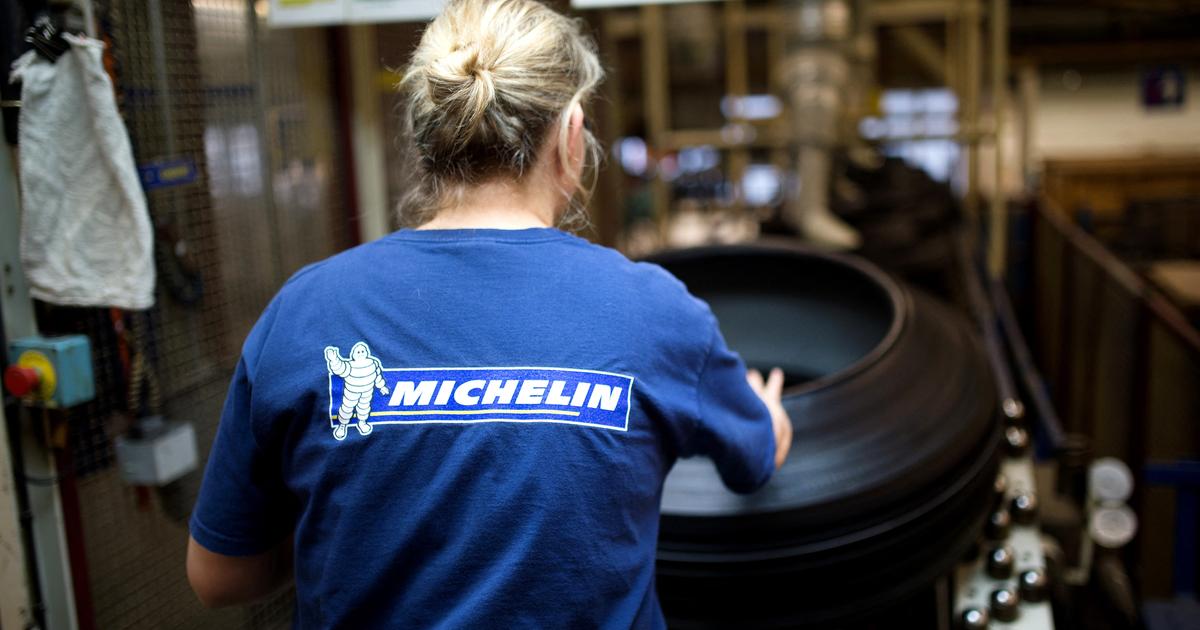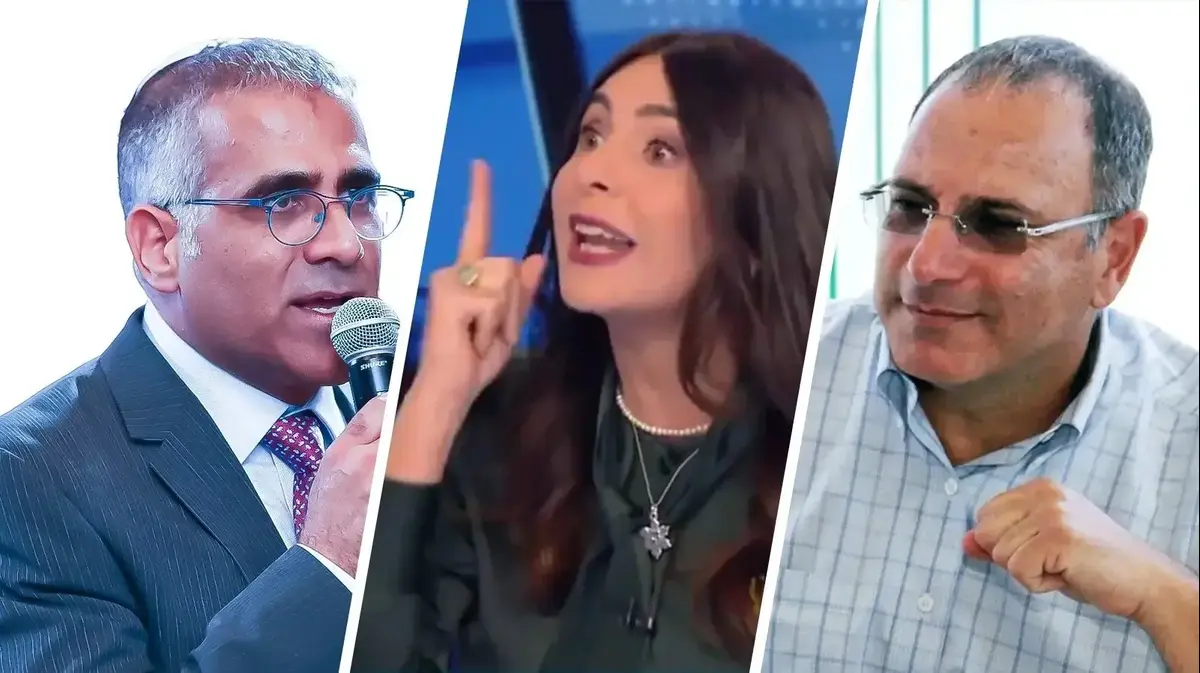Las Cruces copper mine in the Sevillian town of Gerena.José Manuel Vidal / EFE
The ingredients that bring great technological revolutions to life are sometimes just around the corner. It is not necessary to go to the antipodes to find the materials that are in the guts of mobile phones, solar panels, wind turbines and batteries of electric cars. Luis Manuel Ginés, rural postman, realized all this when he learned from the press that between his town, Torre de Juan Abad, in Ciudad Real, and the neighboring town Torrenueva (both in Castilla-La Mancha) there was an enclave of the global economy. It was in 2015. “I still remember the headline: 'La Mancha hides the rare earths that shake the world,'” he says. Since then, Ginés has become the head of a citizen movement that has stood up to him, Quantum Mining - promoter of the project.that like other firms in the industry have shaken the hornet's nest in search of minerals that promise a sustainable and digital economy.
More information
THE RETURN TO THE MINE
The focus is not only on rare earths (17 elements of the periodic table that stand out for their magnetic capacities) and the Quantum Mining project, paralyzed by the Superior Court of Justice of Castilla-La Mancha (TSJCM) due to the environmental risk that represented for the area. The sights are also set on various parts of the Spanish geography where deposits of other elements have been identified such as tungsten (which makes telephones vibrate), nickel (used to form alloys with steel), cobalt (which increases the performance of batteries), coltan (a mixture of metals, which controls the flow of current within circuit boards and for which armed conflicts have broken out in the Democratic Republic of the Congo), lithium (the new white gold) and other minerals like magnesium, vanadium, graphite ...
All of them have awakened the hunger of a sector full of chiaroscuro, feared by the population due to its long history of accidents and declined after the closure of the coal mines in 2018. This activity does not represent even 1% of the gross domestic product (GDP) and generates some 30,000 jobs, the same ones created by Spanish small and medium-sized companies (SMEs) that sell through Amazon. Today, however, it seeks new horizons and has picked up the glove launched by the European Union that has urged Member States to identify projects for the extraction, processing and revaluation of raw material waste that may be operational by 2025. The objective is to guarantee the security of resources in the face of the change in the energy model. Thierry Breton himself, European Commissioner for the Internal Market,he has called for what he calls sustainable mining, the mining of the 21st century.
More information
Thierry Breton: "Europe cannot afford to depend on others for essential materials and technologies"
"If we do not have an open debate on sustainable mining in Europe, without taboos, we will continue in a situation where we will continue to import raw materials from mines far from our homes, conveniently closing our eyes on how they were obtained," Breton said in a speech. uttered recently.
The term NIMBY (not in my back yard, not in my backyard) has permeated a part of society, says Enrique Burkhalter, director of the Quantum Mining project, which aims to extract 3,000 tons of rare earth oxides annually, thereby that 100% of current European demand would be covered and almost a quarter in 2030. “Our project is alive… Everyone wants technology, but let it not touch their soil.
That is very hypocritical, "says the expert.
More information
Mining companies and luxury companies, the most affected by the falls
"Spain has significant potential in minerals related to the energy transition," says Roberto Martínez Orio, researcher at the Geological and Mining Institute of Spain (IGME). The National Confederation of Mining and Metallurgy Entrepreneurs (Confedem) has identified some 13 minerals useful for decarbonization in the national territory. Some of them have a long history in the country, such as tungsten, a coveted element during World War II. Nazi Germany (which used it to shield its anti-tank projectiles) bought it from Franco's Spain. Over the years, the metal lost strength and some deposits were no longer attractive. But now, mines such as Barruecopardo (in Salamanca) or La Parrilla (between Cáceres and Badajoz) have once again gained vigor due to the growing demand.
Thirst for lithium
Other projects have not suffered the same fate. For example, lithium was discontinued in the country in 2011. Today, however, it generates the same greed as gold. It is not for less. EU forecasts suggest that in 2030 the area will consume up to 18 times more than now and 60 times more in 2050. "Lithium resources in Europe are limited," says David Valls, the representative in Spain of the Australian company Infinity Lithium . This company (with a research project in Cáceres that plans an open pit mine) is falling behind in the race unleashed throughout Europe, whose supply depends on Chile for 78%. Infinity Lithium has run into the Junta de Extremadura, with which it resolves an administrative and legal mess that has put the project on edge.The idea of the firm - with 75% Australian capital and 25% in the hands of Sacyr - is to extract some 15,000 tons of lithium hydroxide that would give life to 10 million electric cars.
"The project continues," Valls stresses, despite the fact that the socialist mayor of Cáceres, Luis Salaya, has repeatedly declared him "dead."
The company is not daunted.
It recently signed an agreement with LG, the consumer electronics giant, to supply it with lithium hydroxide extracted in Cáceres.
"That is speculating with a resource that they do not have," says Alejandro Palomo, spokesman for Plataforma Salvemos la Montaña, a citizen group that has opposed the mine.
"Right now, international investors have great doubts ... They say to us: 'What is happening in Spain? How is a key and vital project not being supported by the local administration?", Says Valls.
A protest march to Mérida, promoted by the Salvemos la Montaña Platform against the Valdeflores lithium mine.Jero Morales / EFE
But the thirst for lithium is not exclusive to Spain. On the continent, large mining companies have taken to the field in search of this mineral, which is in the hands of Australia with almost 60% of world production, but whose refining dominates China. The Anglo-Australian mining giant Rio Tinto has a project in Serbia related to this raw material that it intends to launch in 2026. Still awaiting environmental approvals, it has already done the math: it believes there is enough lithium to power a million cars electric per year. "You have to understand that the mining of the 21st century is not that of the last century," says Ignacio Baños, CEO of Lithium Iberia, who likewise seeks to start an operation in 2023 in the Las Navas deposit (Cañaveral, Cáceres ). "In Spain we do not have oil, but we have lithium",emphasizes the representative of the firm, who is waiting for the Junta de Extremadura to grant the pertinent permits for the extraction, and whose project is linked to a battery factory of the Phi4Tech company.
But it is in Portugal where companies have found El Dorado: that illusory city bathed in gold that appeared on many maps for many years, changing place and shape according to the fantasy of cartographers. In the Portuguese nation, however, there is nothing of imagination. It has been proven that it is the sixth world power and the first in Europe in reserves of this mineral. There, the English company Savannah Resources is about to exploit a deposit with an annual lithium production capacity sufficient to supply about 500,000 electric vehicles. The project, which could be the largest in Europe, is only 20 kilometers from Galicia, where the existence of this material is also known. It is in the northwest of the province of Ourense and the eastern edge of the province of Pontevedra where there are signs of the element.Lithium ores (natural material from which they can be extracted) occur in igneous rocks called pegmatites, which are abundant there. The deposits associated with these also have potential for tin, tungsten, columbite and tantalum (the mixture of which is coltan).
Right in Penouta (Ourense), an old tin mine has been reborn from its ashes after it was abandoned in the eighties of the last century. 30 years ago, a residue rich in columbite and tantalite, the coltan that has great attributes, was left there. It has superconductivity, supports very high temperatures and has high resistance to corrosion. This makes it a fundamental ingredient in the technology, aerospace and other disciplines. Since 2013, the Strategic Minerals Spain company has mined tin and columbite-tantalite in Penouta, and has become the only cobalt mine in Europe. Similarly, in Galicia there are abundant traces of monazite (a mineral that constitutes one of the main rare earth ores). This material is distributed throughout the community,but in very low contents, being in the zones where it presents with some wealth the coastal deposits (beaches and dunes) that extend from A Coruña to the river Miño, according to the information offered by the Xunta.
Galician mining takes a run. In Santa Comba (A Coruña), the Australian firm Rafaella Resources seeks to reopen the Varilongo mine to extract tungsten and tin. In Lousame (also in A Coruña), Sacyr is working on the extraction of these last two elements in the underground mine in San Finx. The exploitation was abandoned in 1990 due to the drop in mineral prices, but reopened in 2009. Since 2015 it has been part of Valoriza Minería, Sacyr's mining subsidiary. Last week, nine MEPs from Los Verdes asked the European Commission to initiate an infringement procedure against Spain for the spills with heavy metals that the project is leaving, as explained by Ecologists in Action. The underground mine is a risk to the environment, they warn,It is only seven kilometers from the Esteiro do Tambre park of the Natura 2000 Network (biodiversity conservation areas in the EU) and the shellfish banks of the Noia estuary.
At the Touro mine (also in Galicia), Atalaya Mining (manager of Rio Tinto, the copper mine in Huelva) does not have the easy way. The project, which would leave an initial investment of more than 200 million euros, has received a blow from the Xunta, which has refused permission due to the lack of "environmental sustainability." "Galicia together with Extremadura and Andalusia are the leading communities in the minerals that will help the energy transition", explains Pablo Núñez, delegate of the Official College of Geologists (ICOG) in that autonomous community. "Metal mining has been reactivated in the last 10 years, mainly due to the monopolization of some Asian countries of raw material sources, but also due to the increase in prices that the market has had", says Juan José López, President and Director of the Official Mining Chamber of Galicia.
The case of copper is obvious. While the price of this metal has been on the rise in recent years, boosted by demand, interest in its exploitation has increased. Last May, its price reached $ 10,700 per ton (about 9,019 euros, at the current exchange rate), its all-time high. It is currently above $ 9,000 per ton. The global economic advance, mainly in Asia, and the needs of this element for the development of devices related to sustainability have catapulted its cost. For example, an electric car requires about 89 kilograms of copper, almost four times more than a conventional one. And the thirst is expected to grow. The demand for copper will skyrocket almost 600% by 2030 due to the change in the energy model, according to an analysis by Goldman Sachs.
"Copper will gain more relevance and Spain can play a relevant role", argues Íñigo Capellán, researcher at the Energy, Economics and Systems Dynamics group at the University of Valladolid. The mining companies installed in Andalusia do not want to miss the opportunity. Such is the case of Canada's First Quantum Minerals, which operates Cobre Las Cruces. The firm has in hand a new project (an underground mine to extract copper, zinc, lead and silver) that would mean extending its presence in the region for at least 14 more years, after having exploited a deposit (open pit that will be covered) for more than a decade. Beyond this, the Andalusian Regional Government's Ministry of Economic Transformation, Industry, Knowledge and Universities promotes a tractor project valued at 3.100 million euros for the metal mining and metallurgy sectors to qualify for Next Generation funds from the European Union.
"It involves the exploitation of an extraordinary resource of metallic minerals from the Iberian pyrite belt [a rich geological area that extends through the subsoil of southern Portugal and the Andalusian provinces of Huelva and Seville]", highlights Rogelio Velasco, Minister of Transformation Economy, Industry, Knowledge and Universities of the Junta de Andalucía.
The project includes a score of industrial and infrastructure investments led by the six companies that operate in this segment.
Environmental crossroads
The modern history of mining in Europe is in the midst of a great paradox, says Elena Solís, from the mining group Ecologistas en Acción. "Sure, you try to improve the environment by not emitting CO₂, but you are destroying biodiversity through extraction," he argues. The opposition of environmental groups and citizens has become one of the great obstacles to the advancement of new projects, members of the industry agree. "Anywhere you want to build a mine, you immediately create a group against it," says Manuel Regueiro, president of the ICOG.
At the uranium mine (which is not a critical element for the energy transition) in Retortillo, in Salamanca, citizen pressure has played a relevant role in causing the Nuclear Safety Council to veto the project, given the existence of risks with the treatment and storage of radioactive waste.
"Civil society, articulated through the Stop Uranium Platform, has been fundamental to make visible and demand the protection of the environment," they say from Ecologists in Action.
More information
The moment of truth for the uranium mine that threatens the dehesa de Retortillo
The citizen opposition is spiced up with administrative deadlines and a not very dynamic bureaucracy that prevents a project from being launched in a short term, highlight the experts consulted. The average time to obtain licenses for field analysis is one year or more, and for extraction, between three and seven years, indicates an analysis published by the European Commission. Success rates for exploration studies between 2013 and 2015 are at 90%, but only 10% of the plans obtain exploration permits. "It is essential that we can access critical raw materials so that the great European Green Pact can be fulfilled, since there is a risk of supply and supply to sectors that are key to transforming society," argued Gerardo Herrera, an expert in energy and resources of the European Commission,in a forum held last May.
The Government has echoed that emergency call from Europe.
The Ministry for Ecological Transition and Demographic Challenge is preparing a roadmap for the sustainable management of mineral raw materials, which is expected to be published this fall.
"We are the only country in Europe that still does not have a strategy in this regard," highlights Vicente Gutiérrez Peinador, director of the National Confederation of Mining and Metallurgy Entrepreneurs (Confedem).
The document, among industrialists, is expected as May water.
Minerals are finite
The predation of man towards nature knows no limits. "In one generation we will consume twice as much as today and in 25 years we will have consumed as much as in the entire history of the human being," says Alicia Valero, head of the industrial ecology group at the CIRCE Institute (Center for Research on Energy Resources and Consumption). "The problem is that we aspire to be a decarbonised society and this requires many more minerals," explains the expert.
An electric car needs five times more minerals than a conventional one and a wind farm requires eight times more elements than a traditional gas plant of equivalent power, according to calculations by the Ministry for the Ecological Transition and the Demographic Challenge.
The decarbonization of the planet, Valero predicts, could produce several bottlenecks in at least 10 minerals, including silver, cobalt, copper, lithium and nickel.
Global sourcing and production capacities for raw materials such as lithium, nickel, cobalt, manganese and graphite are currently less than a third of those needed to meet demand for batteries in 2030, says a recent report by Boston Consulting Group.
The great solution: recycling. At present, for example, more than 50% of some metals, such as iron, zinc or platinum, are recycled, and with this it is possible to cover more than 25% of the consumption of the European Union. However, in the case of other elements - especially those required in renewable energy technologies such as rare earths, gallium or indium - the contribution of secondary production is marginal, say sources from the European Commission.



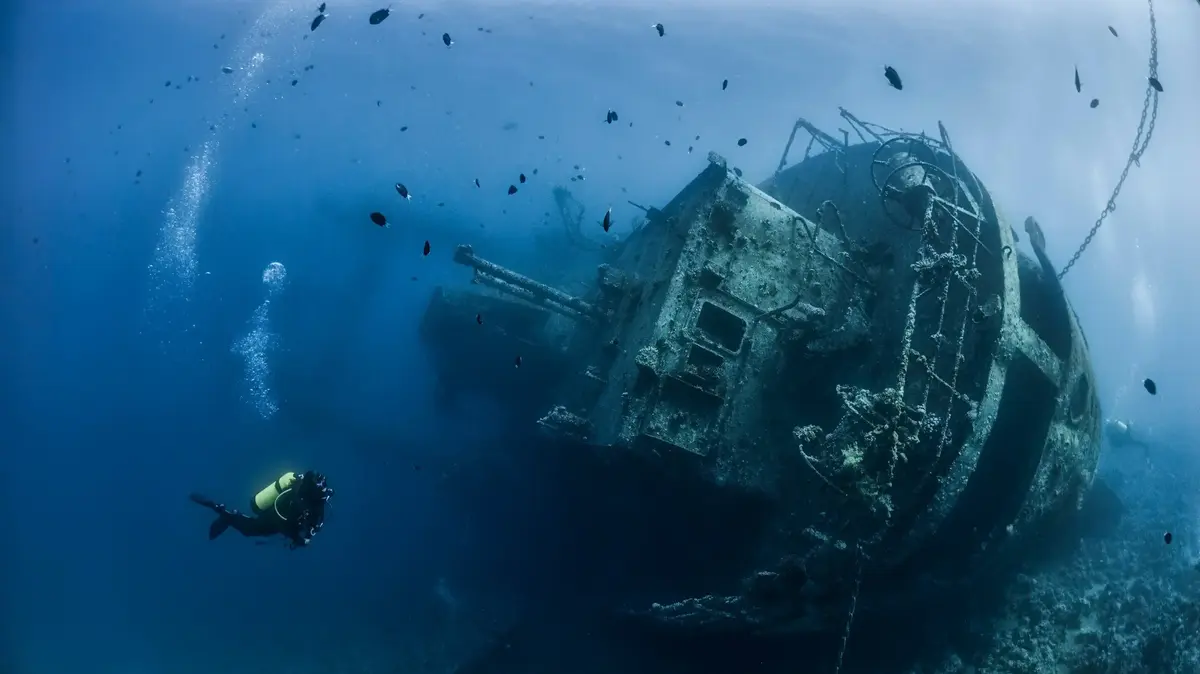
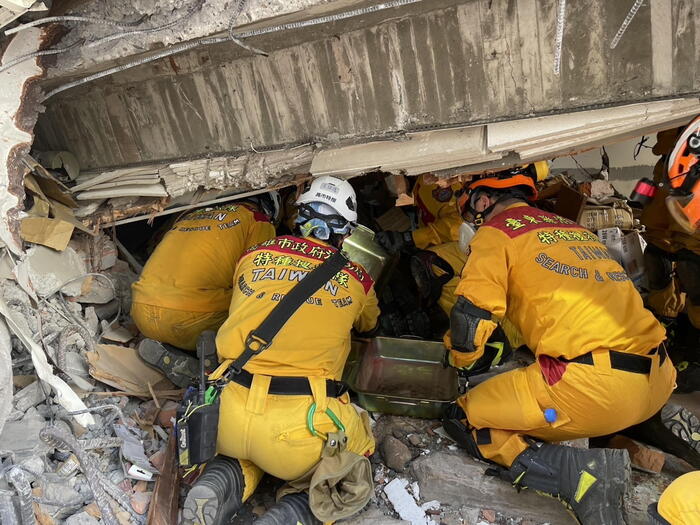
/cloudfront-eu-central-1.images.arcpublishing.com/prisa/C2F5X5KAI5GZ5BA5ZW4TEK3GFQ.jpg)

